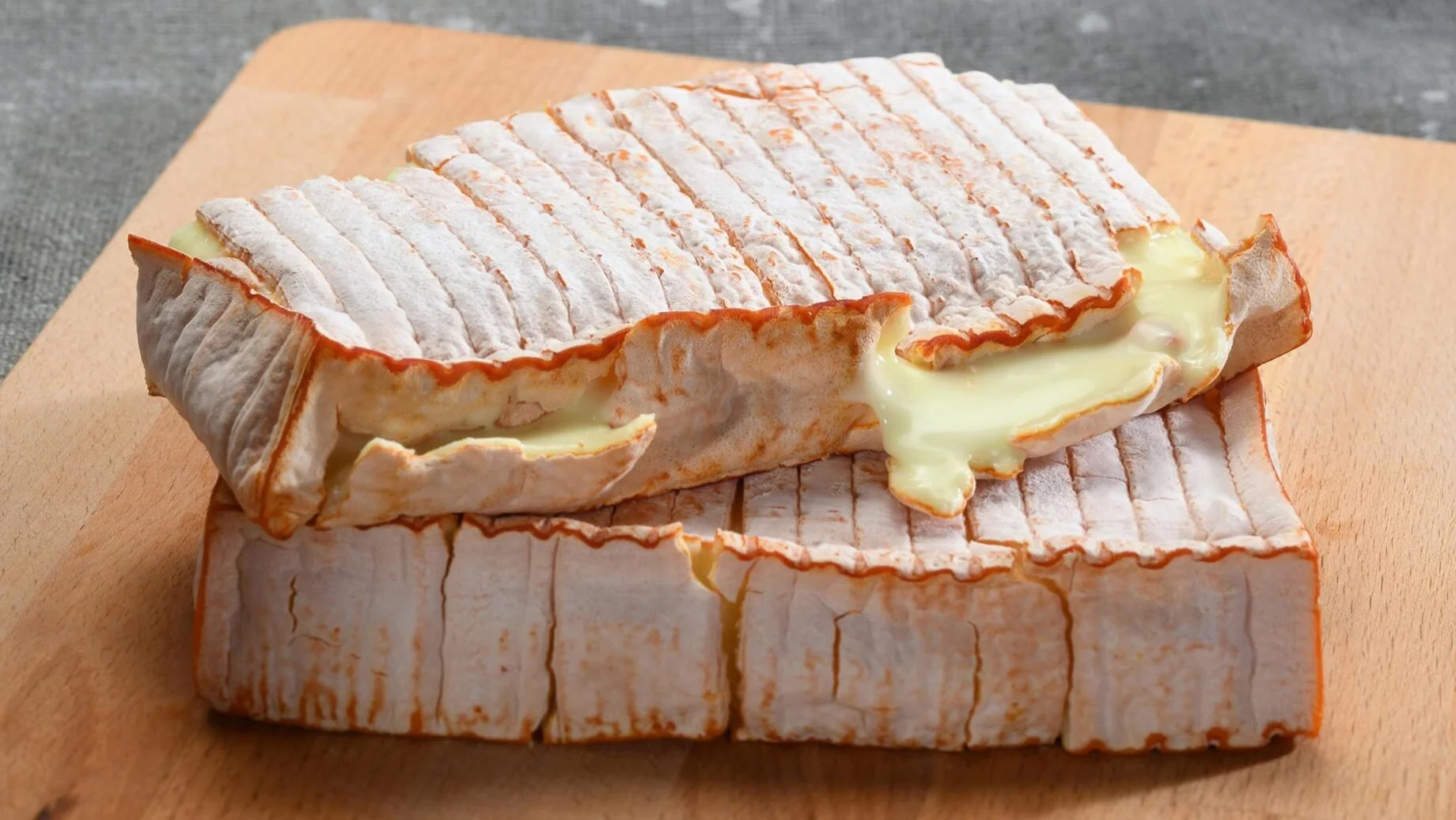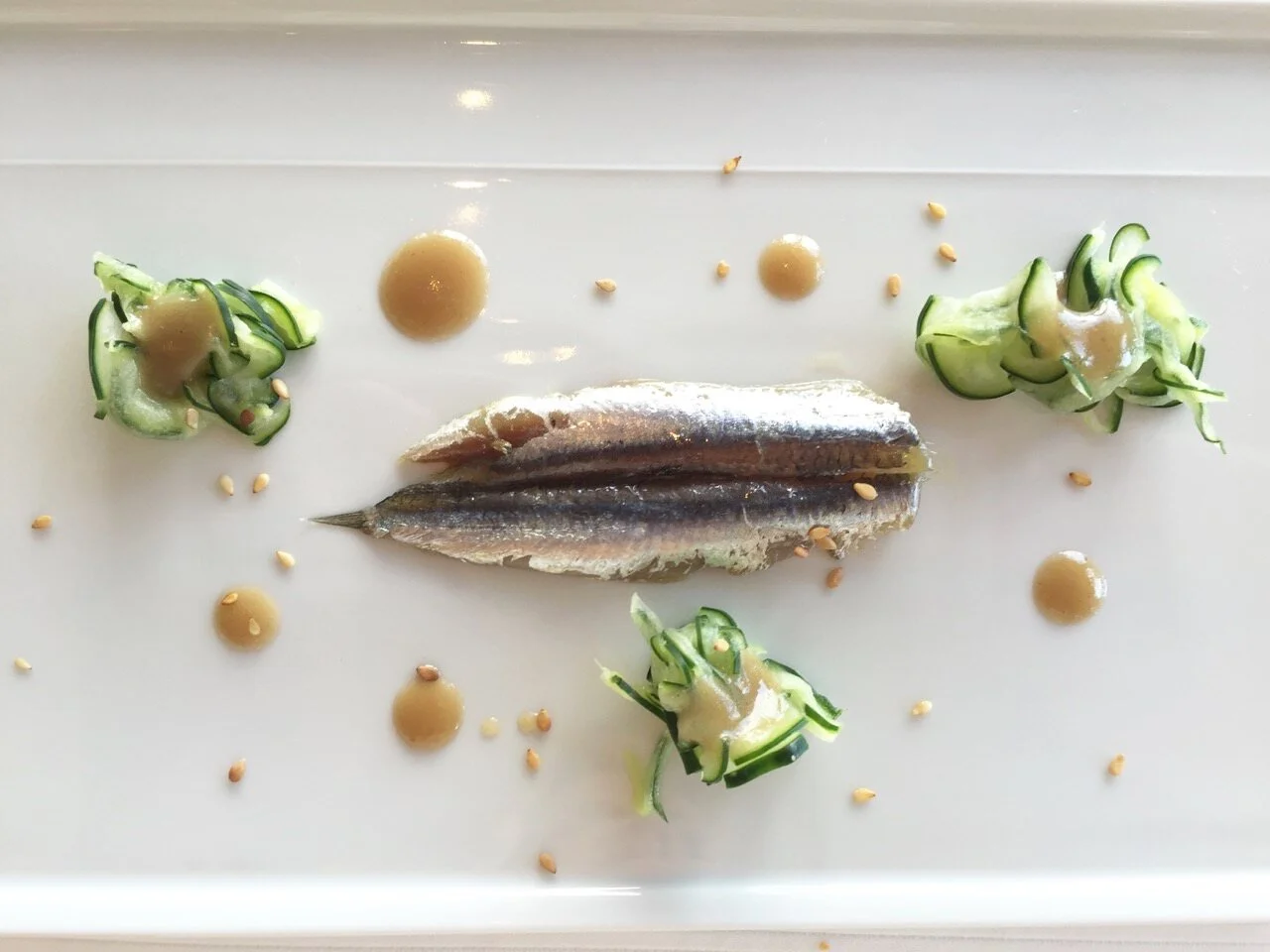World Cheese Encyclopaedia - Each Sunday learn all about a cheese in season.
This week Bleu de Termignon from France.
Country: France
Region: Termignon, Savoie, Rhône-Alps
Made from: Raw cow's milk cheese
Pasteurised: No
Texture: Creamy
Aging time: 8 – 9 months
Certification :no
Bleu de Termignonis a cow’s milk, uncooked pressed cheese, produced by hand at 2300 m above sea level in a handful of mountain chalets, in the heart of the Vanoise natural park. it is made only during the summer mountain grazing, from June to September, starting from the raw milk of the Tarentaise and Abondance cows, who graze on herbs and flowers. This is one of the rare cheeses where the curd is broken and has natural blue veins, in contrast to other blue cheeses, which are injected with spores of penicillin. If any molds are present in the Bleu de Termignon, they are the result of a sought after oxidation, but it is also possible not to find any. The curd is flaky, grainy in some parts, as it is a cut (or crumbled) by hand starting from two curds (one of the same day of the production, and the one from two days before, called sour curd). When the milk turns from liquid to solid, the cheesemaker cuts the curd, works it and salts it before putting it into a wooden mould, lined with a linen cloth. The cloth is changed every day. After draining, the cheese is left for another 15 days in a warm room, before moving to the cellar. The ripening takes 4 to 8 months. During this time, the molds are regularly turned.
Catherine Richard was a milkmaid at the age of six and a cheesemaker by 15, one imagines her veins are as blue as the unique mould that suffuses the bleu de Termignon, so easily does its making run through them. Now almost 60 years old, she is one of a mere handful of producers left making this “totally fascinating, totally awesome” cheese.
“It’s really unusual,” Max at Mons Cheesemongers continues. “She is working in a 700-year-old chalet—just in the summer months, when there’s no snow, because when the snow comes, you can’t reach it.” As soon as the snow melts, she and her small herd of 15 or 16 cows make the journey up Maurienne to the alpage—rich in luscious grasses and wild herbs: chives, white clover, daisies and other flora which, when the first, sweet wheels of the season are cut open, you can quite literally taste.
The cheese is made in stages, the morning milk strained and added to the previous evening’s yield before being renneted, heated and kept warm with a reflective mountain rescue blanket—yes, really—to create curds that, once drained, can be added to curds which have been acidifying in whey since they were made two days before.
“This gives the finished cheese a distinctively tart, acidic taste,” says Max. The whey in which the curds were sitting is topped up, and the curds replenished with fresh ones. Remarkably, in an age of blind, sweeping sterility, the whey in this bucket is never entirely replaced. What’s more, the equipment is all wooden at this stage in the process, helping to harbour the bright, indigenous mould which pervades this cheese in a mysterious, delicious way.
“Bleu de Termignon is a natural blue: the cheese is not pierced, or seeded with penicillin in the way most blues are.” Silently, stealthily, the mould creeps from the outside rind through. By pressing the curds by hand into the cloth-lined wooden cylinders, the mould can wend its way easily through their loose, rubbery texture as the cheese matures, left in the cellar, sometimes over winter, to age and fester under a thick layer of snow and ice while the cows return to the valley, to eat the hay and dried flowers Caroline spent the hours she wasn’t milking or making cheese assidiously preparing.
Only the cows are allowed the flora that grow in the Vanoise National Park; mere mortals can’t touch it. By the time the bleu de Termignon arrives at the Mons Cheesemongers maturing rooms in Bermondsey, its uniqueness has been set in a thick, grey, red dusted-rind, if not in actual stone.
Mountainous crags
“You can still see the red mould on the rind when we receive the cheese,” Max marvels. It’s the same mould which blankets the stone walls of Caroline’s chalet, and the mountainous crags overlooking it. Quite often, they as cheesemongers like to “age it up” by cutting the wheel in half and keeping it at 15 degrees for a few months, to allow the blue mould inside the cheese to diffuse a bit further through.
The taste is unlike any other: Max reaches for mushrooms and woody herbs, but it varies: “Last year they were more aniseedy—more fennel-y, really.” His colleague likens the texture to that of a Lancashire, but again insists on its uniqueness. “It’s the sort of cheese that serious cheese lovers seek out when they want something surprising and new.”
History
The production of blue cheese begins in the mid-18th century in the Savoy, in Haute Maurienne first, and then extents to the mountain pastures of Mont-Cenis, Valloire, and, finally, Termignon. On the other side of the Alps, this type of cheese becomes quickly very renowned. In a letter of September 11th 1816, Monsieur le Comte Ferriex, the intendant of Maurienne, askes Ambroise Daurieux, the notary and châtelain of Lanslebourg, ""to buy 12 blue of the best bluee cheeses in Bessans for Her Majesty the Queen of Sardinia, and send them in the best possible conditions to Turin, addressed to Her Excellency the Marquise of Saint Payre, a dame of Her Majesty"". At the time, Bleu de Termignon was made with a mix of cow, goat and/or sheep milk, like other Savoy cheeses. It was then known as ""morianinghi"", ""mauriennais"", ""persillé du Mont-Cenis"" or ""bleu de Bessans"".
How to enjoy it
A very rare cheese to be enjoyed with Chignin Bergeron white wine or perhaps a chilled Jurançon.
Sources: Slow Food Foundation for Biodiversity, La Fromagerie, Mons Cheesemongers
Follow True Foodies





















